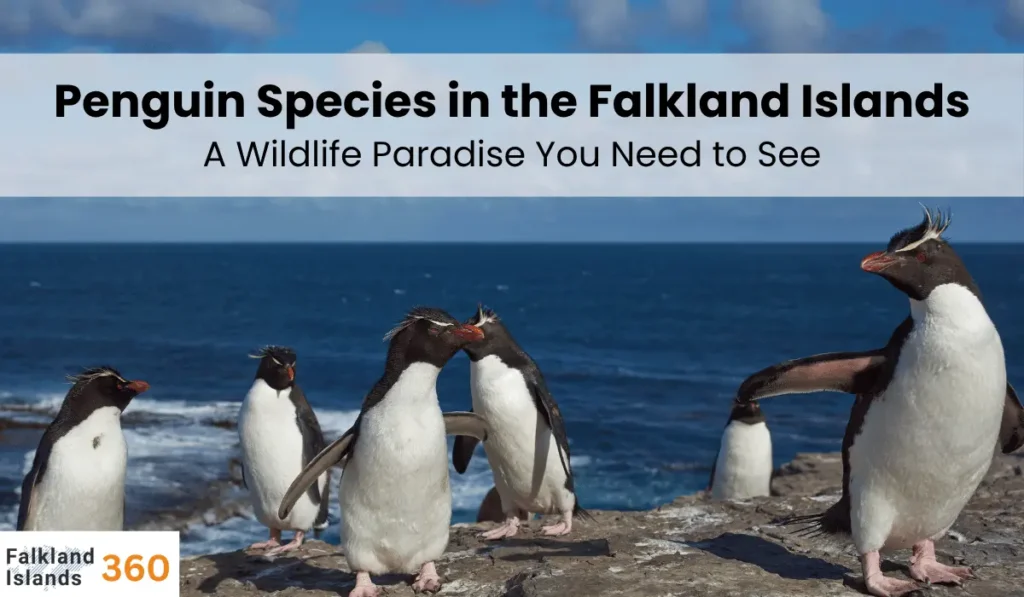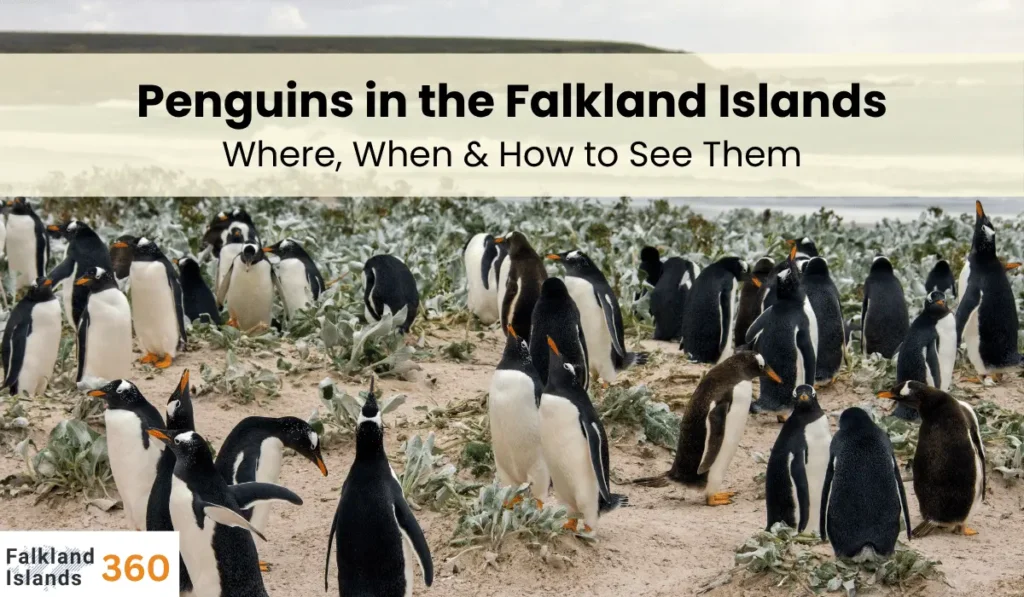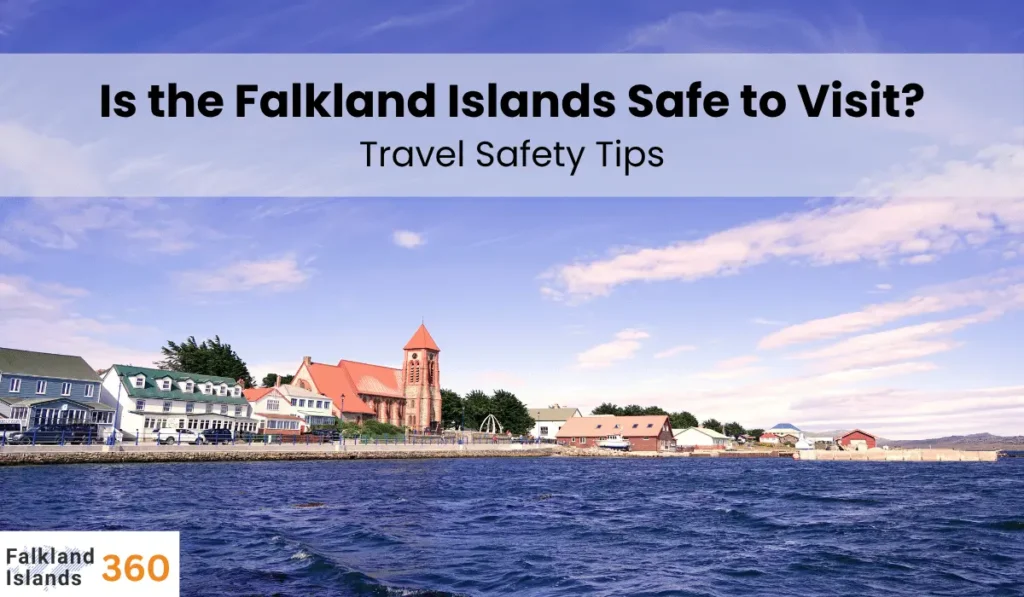Welcome to the Falkland Islands – a remote South Atlantic haven where penguins are practically a way of life. Penguins in the Falkland Islands live on sandy beaches under sunny skies, not icy icebergs. In fact, an estimated 3–5 million breeding penguins crowd roughly 700 islands here, including all five species.
You can easily spot them waddling along white-sand beaches or in grassy burrows. This wildlife paradise (sometimes called a “penguin paradise”) will thrill nature lovers of all ages. Read on for how to get there, what to do, and when to visit so you can experience these charming birds yourself.
Getting to the Falkland Islands
Reaching Stanley (the capital) is easier than you might think. Flights arrive at Mount Pleasant (East Falkland) via two main routes. From the UK, twice-weekly RAF flights depart Brize Norton (UK) via Ascension Island (civilian seats can be booked through the Falklands Government Office in London).
From South America, LATAM Airlines runs weekly Saturday flights from Santiago (Chile) to Stanley (refueling at Punta Arenas). Seasonal stops also connect from Argentina (Rio Gallegos) and sometimes Brazil. You’ll land at Mount Pleasant Airport and then take a short shuttle bus (or arranged transfer) into Stanley.
If you prefer the sea, cruise ships visit Stanley in the austral summer (roughly November–March). Over 40 different cruise lines call at the Falklands as part of Antarctic or Patagonia itineraries. Smaller expedition ships and luxury liners both offer ways to arrive with local tours onboard.
Traveler tips: Flights are limited and weather-dependent, so book well ahead and allow extra days for delays. All visitors need a valid passport and should have return tickets and accommodation details ready. Travel insurance (including medical evacuation) is strongly recommended. Dress in layers with waterproof outerwear – Falklands weather can change by the hour. Once you arrive, you’ll be right where you can meet the penguins in the Falkland Islands up close!
Top Wildlife Activities
The Falklands’ main attraction is wildlife viewing, with penguins starring in many itineraries. Here are some top activities and places:
- Volunteer Point (East Falkland): Home to the largest King penguin colony in the Falklands. Over a thousand King penguins (the towering black-and-yellow ones) gather on the long white beach. You’ll hear the boisterous calls of King chicks and see Gentoo and Magellanic penguins nearby. It’s a private reserve, so visits are guided – but it’s unforgettable.
- Gypsy Cove & Yorke Bay (near Stanley): Just a 15-minute drive from town, this scenic peninsula has easy trails through tussac grass. Here you can walk among Gentoo and Magellanic penguins on a sandy beach. Gentoos (white headband, orange beak) and hole-burrowing Magellanies (notorious “jackass” braying sounds) nest here. Beaches are safe to approach, so photographers love it. Seals and local geese often laze nearby.
- Sea Lion Island: A short domestic flight or private tour away, this rodent-free island is a wildlife haven. Southern elephant seals and sea lions breed here, and the island also hosts breeding gentoo, Magellanic and even some Rockhopper penguins. Guided wildlife walks let you see these penguins as well as elephant seals and albatross on the same day.
- Boat Tours & Birdwatching: Multi-day boat trips sail around West Falkland and outlying isles (e.g. Saunders, West Point, Carcass) to see cliff-nesting species. These tours often spot albatrosses soaring overhead and whales or dolphins offshore. The Falklands famously host millions of seabirds – black-browed albatross, giant petrels and more – and killer whales (orcas) sometimes hunt near the shore.
- Stanley and Local Nature: Don’t miss Stanley town itself. Besides shops and colonial charm, it has easy wildlife access. Gentoo penguins can waddle up the boardwalk at nearby Yorke Bay, and a short taxi to Gypsy Cove (above) brings you face-to-face with penguins. Other days you can hike Mount Tumbledown or squeeze in a visit to sea lion and seal colonies on accessible beaches.
Penguin Species in the Falkland Islands
You can see five penguin species here – more than anywhere except Antarctica – each with its own style:
Gentoo Penguins: The most common species here. They have orange beaks and a white stripe across the top of their heads. The Falklands host the world’s largest Gentoo population. Gentoos nest on beaches and grasslands (even up to 5 km inland!) year-round. Watch them speed-swim (they can reach 30+ km/h) and hop onto shore along “penguin highways” in areas like Saunders Island, Stanley’s Yorke Bay and Gypsy Cove.
King Penguins: These are the biggest and most regal. Nearly 90 cm tall, they have flashy yellow-orange collars and black heads. The Falklands’ biggest King colony (1,000+ penguins) is at Volunteer Point. You’ll see adults tending fluffy gray chicks when you visit in summer. Kings here are the second-largest colony on Earth (after South Georgia). They march in military order in the shallows – a true natural spectacle.
Magellanic Penguins: Smaller (about 60 cm) with two black breast bands, they nest in 2-meter-deep burrows. Nicknamed “jackass penguins” for their loud braying call, Magellanics spend winters at sea near South America and return each spring (around September) to breed. In summer you’ll see them burrow-hopping in tussac grass near Stanley and on places like Volunteer Point. Each year they lay a pair of eggs and fiercely guard their chicks against skuas.
Southern Rockhopper Penguins: The tiniest (under 60 cm) and silliest-looking with yellow ‘eyebrow’ crests. About 320,000 pairs live in the Falklands, arriving in October to breed. These little dynamos hop up steep cliffs to reach hidden nest ledges. The best chances to see them are on outer islands like Bleaker or West Point. Don’t be surprised if you glimpse a flock of similarly-crested Macaroni penguins mixed in; Macaronis often sneak into Rockhopper groups.
Macaroni Penguins: Very rare here, often hidden among Rockhoppers. Distinguished by massive yellow-orange crests, they are only seen as stragglers on a few islands. Perhaps a few dozen pairs nest in the Falklands. As [2] notes, “Look out for the elusive Macaroni in amongst the Rockhoppers”. If you spot one, consider yourself lucky – it’s a special sight in this part of the world.
Best Time to See Penguins
Penguins are most active and visible in southern spring and summer (November through March). That’s when many species are nesting or have chicks. In late spring and early summer, King penguin chicks are fluffiest and Magellanic and Rockhopper adults are up on land. By mid-summer you’ll see chicks of all species, and the beaches are full of comical juveniles.
Gentoo penguins are around year-round, so even off-peak (October or April) you’ll still find them. But for the full show (breeding adults + chicks), time your trip for the Falkland summer. Keep in mind this is also the busiest season – tours fill up! The shoulder months (Oct/Apr) can be quieter and still offer penguins and other wildlife.
Top Local Attractions
Make sure to add these highlights to your Falklands itinerary:
- Volunteer Point (East Falkland): Unforgettable for its big King penguin colony and long white sand beach. By December you can walk right among hundreds of Kings, Gentoos and Magellanics (children delight in the noisy chicks).
- Gypsy Cove / Yorke Bay (near Stanley): A wildlife park with dunes and lagoons. A short trail brings you to beaches filled with friendly Gentoo and Magellanic penguins. Pelicans, geese and seal pups are often seen here. It’s easy, flat walking – great for families.
- Sea Lion Island: (Southern Section) Famous for elephant seals and sea lions on sandy shores, and also a spot for rare penguins. You’ll walk through tussac grass to see Magellanic, Gentoo and Rockhopper nests. Guided walks make the wildlife viewing safe and rewarding.
- Stanley Town: This quaint port town (capital of the Falklands) is the travel hub. Stanley itself has attractions like the Whalebone Arch and neat pubs. More importantly for penguin-watchers, Stanley’s vicinity has colonies: Gentoos at Yorke Bay and both Gentoos/Magellanics at Gypsy Cove. You can explore Stanley’s shops and history, then be back in time for a penguin drive-by on the local roads.
Conclusion
The Falkland Islands truly are a penguin lover’s dream. Friendly islanders will welcome you with open arms, and daily life here often involves stopping to watch a penguin parade. From the towering Kings at Volunteer Point to the cheeky Rockhoppers on craggy shores, the sights are unforgettable.
If you crave a nature escape unlike anywhere else, make room on your bucket list for the penguin species in the Falkland Islands. Trust us – stepping onto a sunlit beach with penguins at your feet is a once-in-a-lifetime thrill. Start planning your trip now and get ready to meet your new feathered friends!
Penguin FAQs
Are penguins easy to see in the Falklands?
Absolutely. Colonies often have hundreds of birds on open beaches and trails, so sightings are almost guaranteed. Visitors routinely find penguins waddling just feet away on beach paths. You don’t even need binoculars!
Is it safe to visit penguin colonies?
Yes, Falklands penguins are tame, but remember they are wild animals. Follow the local Countryside Code: keep at least 6 meters distance and avoid startling them. Do not attempt to touch or feed them. If you stay calm and give them space, you can safely enjoy them. There are wardens at busy sites to guide visitors.
When is the best time to visit for penguins?
Plan for late spring/summer (Nov–Mar). That’s when most species are ashore nesting and chicks abound. December–January offers long daylight and peak activity. Early spring (Oct/Nov) also works for mature adults arriving. Avoid the (cold, windy) winter, when only Gentoo penguins remain.
Do I need a tour or guide?
Not strictly, but tours can add local expertise. You can drive or taxi to places like Gypsy Cove and volunteer point (with park guides there). Tours are useful for remote islands (Sea Lion, West Point) and battlefield sites. Independent travelers usually join day tours or hire 4×4 transfers to key colonies.
What should I pack for Falklands wildlife?
Think outdoors gear. Layers and a waterproof jacket are musts (the weather is famous for rapid changes). Good walking shoes or boots for muddy paths. Bring sunblock and a hat – the sun can be strong even on cool days. And don’t forget binoculars and a camera: you’ll want to capture those penguin antics!




